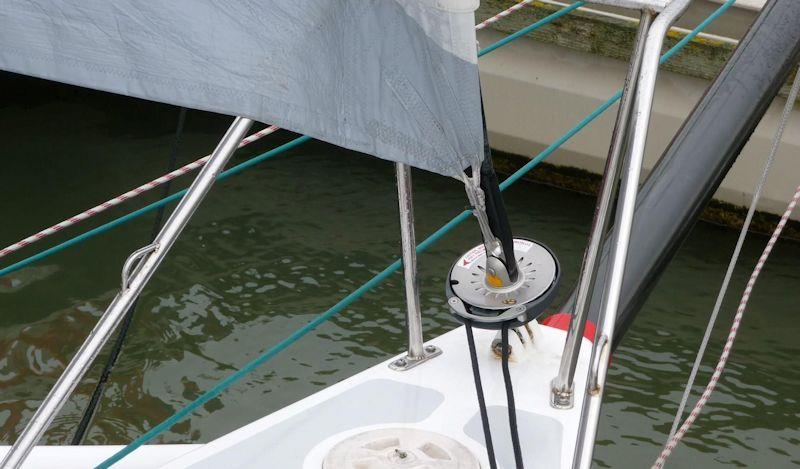
Structural Furling Forestays
by Phil Anniss 17 Dec 2018 09:00 UTC

A structural furler © Karver
Continuous line furlers, together with a torsional cable, is an alternative furling system for the main structural forestay. This is an increasingly popular, lightweight choice for both racing and cruising sailors.
What is a 'Structural Furling Forestay'?
The main forestay on a sailing yacht is a crucial part of its 'standing rigging'. It is a permanent installation, normally with a fixed length, and an essential element for maintaining the correct rig tension and tune.
Traditionally, we have accepted the forestay as a 'given' and then added appropriate sail handling systems to it, depending on your sailing style. For example, old school headsails are hanked on to the wire stay with piston hanks, racers clip on lightweight plastic twin-groove foils for seamless upwind headsail changes and cruisers add aluminium foils and furling drums onto the fixed stay to allow genoa furling and reefing.
A structural furling forestay is different in as much as the forestay itself is an integral part of the furling system. Instead of being attached directly to the mast tang and deck chainplate, the forestay attaches to the furling drum at deck level and a swivel sits between the stay and the mast tang and the headsail furls directly around the revolving forestay. Both Drum and swivel are therefore permanent, structural elements in the system and take the full rig load.
Old style furler/foil systems have evolved to fit on/around the existing wire forestay. However, continuous line furlers were developed for independent code zero and asymmetric furling systems where the drum, swivel, cable and sail all form part of an integrated system.
Continuous line furler manufacturers have now evolved their product ranges to take in this new, niche, structural furling forestay application to offer some significant benefits.
Advantages
- Weight
- 80% lighter than a traditional furler + foil solution
- On an average 56ft cruising boat = a weight saving of 25+ kilos
- Which is equivalent to adding 100-110kg of ballast to the bottom of the keel!
- Offshore Sailplan
- A continuous line structural furler cannot be used with the sail reefed
- This lends itself to offshore sailplans with a smaller jib / yankee plus staysail
- This has been a popular choice for offshore sailors for generations and increasingly offshore race boats
- Windage
- Not a major factor for most cruising sailors but removal of the aluminium foil can reduce windage by approx.... 70%
- Maintenance
- Have you looked at the parts list for a conventional furler and foil!?
- There are tens if not hundreds of individual parts, screws, connectors etc
- Conversely with a structural furling forestay – there is one drum, one cable and one swivel – with simple interfaces, which provides a basic, effective and low maintenance system.
- The cable also has a soft, abrasion resistant outer cover which is kinder to your sail.
Disadvantages
- All-in OR All-out
- A continuous line structural furler cannot be used to reef the sail, therefore it does not lend itself to a boat with a large 150% genoa
- A decision to switch to a structural furling system has to be taken in conjunction with possible changes to your headsail wardrobe
- Bearing the Load
- The drum and upper swivel take the full tensile load of the forestay which holds the mast up.
- Whilst the bearings are designed to take these loads they need regular maintenance to ensure long term trouble free operation
- Composite Forestay
- A new concept for many cruising sailors who may be concerned that one cable has two functions: to hold the full structural rig load and act as a torsional cable
- But these cables are designed for the purpose, have higher safety factors than wire and come with a significant weight advantage
Summary
For an offshore racing or cruising boat with the right sail plan, a structural furling forestay offers a lightweight, simple, reliable, maintenance free solution. Reducing rig weight aloft has a significant impact in reducing overall rig loads which in turn reduces ware and fatigue on the mast, rigging and fittings to provide lighter, faster and safer sailing – which is a win-win.
For more information, download our Structural Furling Forestays Guide.